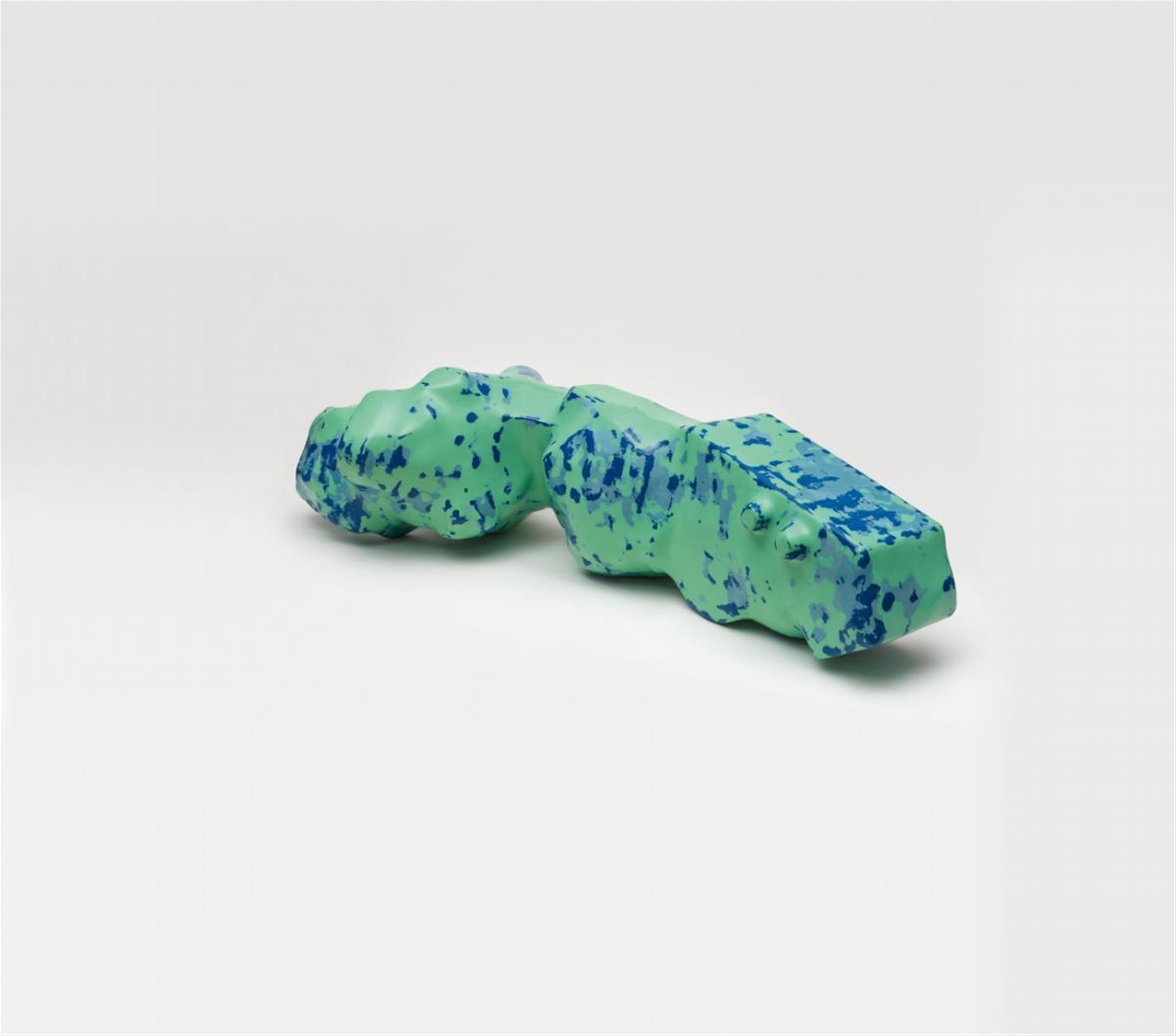Wilhelm Mundt
Trashstone 024
1992
Production residue in GRP. Length approx. 265 cm.
Wilhelm Mundt's first stone '001' from the group of works 'Trashstones' was created in 1989 whilst teaching at the Kunstakademie in Dusseldorf. This group consists of numerous 'Trashstones' of various colours and sizes, levering Mundt to international acknowledgement and the award of the Jack Goldhill Award for Sculpture at the Royal Academy of Arts in London in 2007. As the bulges and dents suggest, and the name enhances, the 'Trashstones' are not empty. They are filled with various waste, such as the remains of old sculptures and even Mundt's personal belongings which he no longer needs: 'There is essentially no waste. There are only things which one is temporarily not interested in'. (Wilhelm Mundt, in: Kunstsammlung Nordrhein-Westfalen (ed.), Die Bildhauer, Kurzführer Sammlung Nordrhein-Westfalen, Düsseldorf, 2013, p.60). With this statement, he was summarising the idea of packing up one's waste and preserving it in another form for the future, rather than disposing of it. In an elaborate working process, Mundt coats the compressed objects with many layers of fibreglass-strengthened plastics and polyester, which are then ground and polished to intentionally reveal the objects. The outer layers of Mundt's early 'Trashstones', to which this example belongs, were coloured. Recently he has turned more frequently to other materials and colours, such as polished aluminium. All these sculptures are reminiscent of fossil finds, the polished surface awakening the desire in the viewer to handle the pieces. The stones also feature numbers, which give the impression of a series of works, but do not reveal anything about the coated objects. The character of the objects remains the preserve of the artist. Therefore, there are no limits to the phantasy of the viewer when seeing these secretive amorphous objects.

